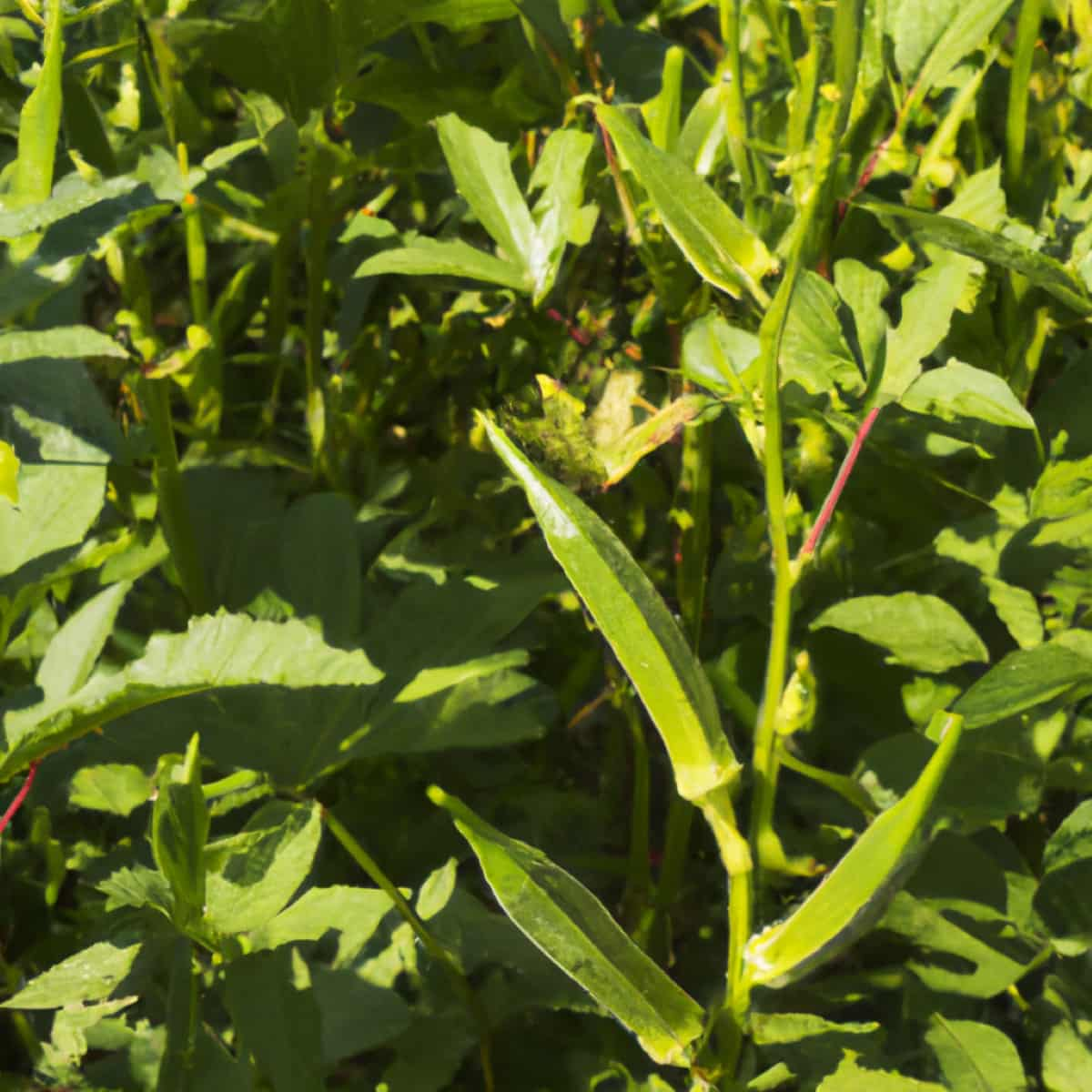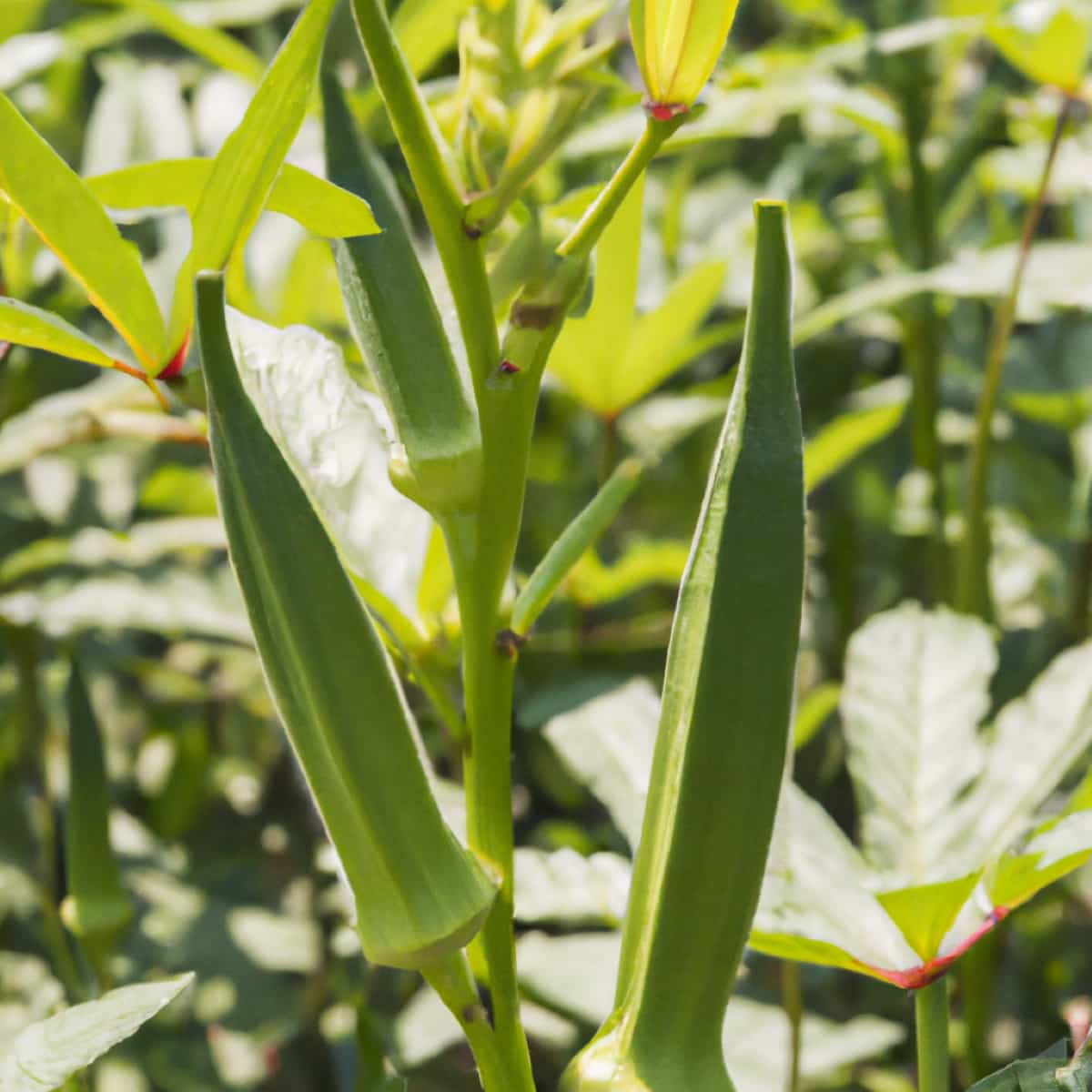This comprehensive project report provides a detailed analysis of the economics of 1-acre okra cultivation, focusing on production costs and profit analysis. Okra (Abelmoschus esculentus) is a popular vegetable crop with high market demand, making it an attractive choice for farmers. By examining the various components of production costs, such as land preparation, seed selection, labor, fertilizers, irrigation, pest management, harvesting, and post-harvest activities, this report aims to provide valuable insights into the profitability of okra cultivation on a 1-acre farm.

1 Acre Okra Farming Cost and Profit
Introduction to Okra Cultivation
Okra cultivation is a popular agricultural practice known as lady’s finger or bhindi. It is a warm-season crop that thrives in tropical and subtropical regions. Okra plants are usually grown for their tender, elongated green pods consumed as vegetables. They require well-drained soil, ample sunlight, and regular watering for optimal growth. Okra is sown directly in the field, and the plants reach maturity within 60 to 80 days. This versatile crop is easy to cultivate and offers a rich source of dietary fiber and essential nutrients.
Market and Demand for Okra
The demand for okra, a versatile vegetable known as lady’s finger or bhindi, is significant. The global okra seeds market is witnessing significant growth due to the rising popularity of okra among health-conscious consumers. It is projected to reach a size of USD 352.7 million by 2023, with a CAGR of 9.8%. In India, the okra seed market was valued at USD 83.71 million in 2021 and is expected to grow to USD 148.45 million by the forecast period, exhibiting a CAGR of 7.91%. The demand for Indian okra is also increasing in European markets during the winter season.
Best High-Yielding Variety for Okra Cultivation
- Louisiana Green Velvet: Retains seeds when sliced, round pods, matures in 56-59 days.
- Clemson Spineless: Spineless variety, heavy yields, angular pods, mature in 55-58 days.
- Dwarf Green Long Pod: Star-shaped pods, good for profit, matures in 52-55 days.
- Annie Oakley (Hybrid): Spineless variety, bright green star-shaped pods, matures in 53-55 days.
- UGA Red: Red pods, ornamental/home garden use, start producing okra in 58 days.
- Lee: Spineless, semi-dwarf variety, bright green angular pods, matures in 55-58 days.
- Prelude: Open-pollinated, spineless variety, dark green fluted pods, matures in 50-55 days, better yield than Clemson Spineless.
- As its name suggests, Emerald is a spineless variety with smooth, round pods and semi-cut leaves. It is particularly favored for canning or processing purposes.
- Cajun Delight offers a delightful combination of flavor and texture, making it a preferred choice for culinary use.
- Alabama Red is known for its beautiful red pods and is often grown for ornamental purposes or in home gardens.
Note: India cultivates popular varieties of okra, including Kashi Ageti, a early maturing variety with 9-10 cm long pods and 8-9 seeds per pod. Kashi Chaman VRO-109 is a medium-tall variety resistant to YVMV and OLECV, yielding around 150-160 q/ha. Arka Nikitha exhibits early flowering and has dark green, tender, and smooth fruits, with a high yield potential of 21-24t/ha in 125 to 130 days.
Best Package and Practices for Okra Cultivation
- Variety Selection: Choose high-yielding, disease-resistant varieties such as Clemson Spineless, Emerald, or Louisiana Green Velvet, based on local climatic conditions.
- Soil Preparation: Ensure well-drained soil with good organic matter content. Conduct soil testing to determine nutrient deficiencies and amend accordingly.
- Sowing and Spacing: Sow seeds directly in the field at the appropriate planting time, maintaining a 30-45 cm spacing between plants and 90-120 cm between rows.
- Irrigation: Provide consistent watering, aiming for a 70-80% soil moisture level. Drip irrigation or furrow irrigation is recommended for efficient water management.
- Fertilization: Apply balanced fertilizers based on soil test results. Generally, nitrogen (N), phosphorus (P), and potassium (K) are required in a ratio of 1:2:1.
- Weed and Pest Management: Implement timely and effective weed control measures. Monitor for pests such as aphids, fruit borers, and spider mites, and use appropriate insecticides or integrated pest management techniques.
- Disease Control: Apply preventive measures such as crop rotation, seed treatment, and foliar sprays to combat common diseases like powdery mildew and fungal infections.
- Harvesting: Regularly harvest okra pods when they reach 7-10 cm long, as mature pods become tough. Harvesting every 2-3 days promotes continuous pod production.
In case you missed it: 1-Acre Jackfruit Cultivation Cost and Profit Analysis: Project Report and Economics

Cost of Cultivation for 1-Acre Okra Cultivation
The cost of cultivation for 1-acre okra can vary depends on several factors, including the region, farming practices, and market prices. Here is a general breakdown of the cost components involved:
Cost Component Amount (in INR)
| Cost Component | Amount (in INR) |
| Land preparation | 3,000 – 4,500 |
| Seeds | 2,500 – 3,500 |
| Fertilizers | 7,000 – 9,000 |
| Pesticides | 2,000 – 3,000 |
| Irrigation | 2,000 – 3,000 |
| Labor (including harvesting) | 5,000 – 6,000 |
| Miscellaneous expenses | 2,000 – 3,000 |
| Total | 23,500 – 31,000 |
These figures are approximate and can vary based on specific factors such as location, farming practices, labor costs, and market fluctuations. It is advisable to consult local agricultural experts or government agencies for more accurate and region-specific cost estimates.
Total Returns and Net from 1 Acre Okra Cultivation
Total Cost Range: INR 23,500 – INR 31,000 Assuming an average yield of 10 tons (10,000 kg) and a market price of INR 25 per kg, the total revenue can be calculated as follows:
- Total Revenue = Average Yield * Market Price
- Total Revenue = 10,000 kg * INR 25/kg
Total Revenue = INR 2,50,000
- To calculate net returns, deduct the total cost from the total revenue.
- Net Returns = Total Revenue – Total Cost Considering the lower end of the cost range (INR 23,500)
- Net Returns = INR 2,50,000 – INR 23,500
- Net Returns = INR 2,26,500
- Considering the higher end of the cost range (INR 31,000), the net returns would be:
- Net Returns = INR 2,50,000 – INR 31,000
- Net Returns = INR 2,19,000
Challenges and Risks in Okra Cultivation
- Pest and disease outbreaks
- Unpredictable weather conditions
- Inadequate water availability or irrigation problems
- Weed Competition and Management
- High production costs and input prices
- Fluctuating market prices and demand
- Lack of proper post-harvest handling and storage facilities
- Labor shortages and skilled labor requirements
- Soil fertility depletion and nutrient management
- Limited access to credit and financial resources for investment.
Managing these challenges effectively requires farmers to employ proper agronomic practices, stay updated with market trends, and seek support from agricultural extension services or experts.
In case you missed it: 1-Acre Lemon Cultivation Project Report: Production Cost and Profit Analysis

Conclusion
1-acre okra cultivation can be a profitable venture with careful planning and implementation. Despite facing challenges such as pest and disease outbreaks, fluctuating market prices, and production costs, the potential returns outweigh the risks. By adopting appropriate agronomic practices, efficient resource management, and market-oriented strategies, farmers can achieve sufficient net income and contribute to the sustainable growth of the okra cultivation industry.
- Feed Your Flock for Less: Top 10 Tips to Save on Chicken Feed
- Ultimate Guide to Ossabaw Island Hog: Breeding, Raising, Diet, and Care
- Hatching Answers: The Top 10 Reasons Your Chickens Aren’t Laying Eggs
- Eggs and Economics: Breaking Down the Cost of Raising Backyard Chickens
- Defend Your Greens: Proven Methods to Keep Iguanas Out of Your Garden
- Ultimate Guide to Cinnamon Queen Chicken: A Comprehensive Guide for Beginners
- Ultimate Guide to California Tan Chicken: Breeding, Raising, Diet, Egg-Production and Care
- Ultimate Guide to Marsh Daisy Chicken: Breeding, Raising, Diet, and Care
- 10 Types of Chicken Farming Businesses You Can Start for Profits